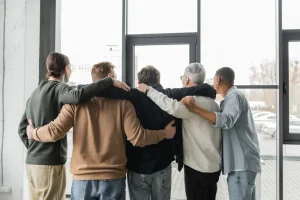Sober living
How to Handle Peer Pressure for Kids

If your teens are increasingly finding themselves in uncomfortable situations, suggest they reassess their friendships. We are at our best when which of the following is a type of indirect peer pressure? we surround ourselves with people with similar values and interests. We have learned that educating teens about what not to do is not enough.
- To own our limits or our feelings can help the child realize that our feelings are not about them.
- Peer pressure is internal or external pressure felt to behave in certain ways, both good and bad.
- Here are nine things you can do to help your kids grow from the challenges of peer pressure.
- Just as in-person interactions can be both positive and negative, communication through social media can also have a positive or negative effect.
- If your teens don’t have quite enough confidence to walk away on their own, encourage them to look for a like-minded peer or friend who feels the same way they do in a particular situation.
Positive Peer Pressure

” It is crucial that you monitor your child’s activities on social media or the internet and address any concerns with them. Asking questions out loud to a friend or a group of peers when in a tough situation may help win allies and take some of the pressure off. For example, if teens are being pressured to shoplift, teach them things they can ask their peers.
Lifestyle

It also makes the child wish to keep your approval, enough so that he or she may resist negative peer pressure if it will interfere with said approval. Teens empowered with tools to face challenging social situations gain important opportunities to express their values. They have confidence to do what’s right and skills needed for healthy future relationships. Once a child begins seeing themselves as a part of a community, the desire to fit in may occur for better or worse.
Model positive behavior
Since therapy and mental health can be understood as a shift from shoulds and shouldn’ts to feelings, the way you teach a child morality is to teach them how to feel. And while most victims of abuse don’t abuse others, all abusers have been abused, to one extent or another. When one is abused, especially in severe cases, it is said that they are turned into an object—the objectification of another.
Helping Your Teen Craft Their First Resume: A Parent’s Guide
It is therefore very important to recognize the signs of low self-esteem as a result of peer pressure before the child enters his or her “tween” years. In younger children, these signs frequently include withdrawn behaviour, a deep desire to avoid school, irritability, hostility when asked about their friends, and odd bouts of anxiety. Children may also display an almost paranoid need to check up on their chosen social media sites.

More on this topicFor Kids
- When one is abused, especially in severe cases, it is said that they are turned into an object—the objectification of another.
- Read on to learn the signs, types, and impact of peer pressure and how to handle it when your child experiences it.
- When achievements are driven by external validation rather than personal interest or satisfaction, children may struggle to find joy in learning and exploration.
- As teens navigate peer culture, parents play an important role in preparing them with the social skills needed to make their own smart choices and avoid peer pressure.
- We’re recognized experts on treating eating disorders, depression and other mood disorders.
This is why it is important to talk to your child early on about peer pressure and how to avoid being led into negative behaviors by their peers. Kids often look to their parents or caregivers for cues on how to handle difficult situations, and peer pressure is no exception. So, one of the most effective ways to guide them is to demonstrate positive decision-making in your own life. Parents can set a positive example for their children by demonstrating healthy behaviors and relationships.

